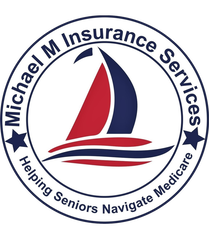When navigating the maze of Medicare options, many seniors and their families find themselves at a crossroads: should they choose a Medigap plan (also known as Medicare Supplement Insurance) or enroll in a Medicare Advantage plan (Part C)? Although both options aim to reduce out-of-pocket healthcare costs, they operate in very different ways. Understanding their distinctions is critical for making an informed decision tailored to your health and financial needs.
Medicare Advantage (Part C): An All-in-One Alternative
Medicare Advantage Plans, offered by private insurance companies approved by Medicare, combine your Part A (hospital) and Part B (medical) coverage and often include Part D (prescription drug coverage) as well. These plans frequently come with extra benefits like dental, vision, hearing, and even gym memberships.
Key Features of Medicare Advantage:
Bundled Coverage: One plan for hospital, medical, and often drug coverage.
Network-Based: Most plans use HMO or PPO networks, meaning you may need referrals and must see in-network providers.
Low Monthly Premiums: Some plans come with $0 premiums (besides the Part B premium), but co-pays and deductibles may apply.
Geographic Restrictions: Benefits may vary based on your ZIP code and provider network.
This all-in-one solution is ideal for individuals who want managed care and are willing to work within a specific provider network.
Medigap (Medicare Supplement Insurance): Filling the Gaps
Medigap plans are designed to supplement Original Medicare (Parts A & B), covering some or all of the remaining out-of-pocket costs like deductibles, coinsurance, and copayments. These plans do not cover services like vision, dental, or prescription drugs, so you may need separate Part D coverage.
Key Features of Medigap:
Freedom to Choose Providers: See any doctor or specialist in the U.S. that accepts Medicare.
Predictable Costs: Higher monthly premiums but fewer unexpected costs.
No Referrals Required: Go directly to specialists without prior approvals.
No Extra Benefits: Focuses solely on medical and hospital cost gaps; no dental, vision, or wellness extras.
For those who travel frequently or want more provider flexibility, Medigap may offer peace of mind despite higher premiums.
Which Plan Is Right for You?
Choosing between Medigap and Medicare Advantage depends on your:
Budget – Do you prefer paying a higher premium for fewer surprise bills?
Lifestyle – Do you travel often or stay mostly in one area?
Medical Needs – Do you have chronic conditions that require specialist care?
Provider Preferences – Do you want access to any doctor or are you okay with a network?
For instance, if you’re a snowbird spending half the year in Florida and half in New York, a Medigap plan with nationwide access may be ideal. But if you’re looking to save money on premiums and your doctors are all local, a Medicare Advantage plan might work better.
There’s no one-size-fits-all answer when choosing between Medigap and Medicare Advantage. Each plan offers distinct advantages and limitations. What’s most important is understanding your own healthcare priorities, financial comfort, and lifestyle needs.
At Michael M Insurance Services, the experienced team is ready to answer all your Medicare-related questions. With personalized quotes and consultations tailored to your location and medical needs, you can confidently say: There is a solution!
FAQs: Medigap vs. Medicare Advantage
Can I have both Medigap and Medicare Advantage?
No. You cannot enroll in both simultaneously. If you have a Medicare Advantage plan, you cannot buy a Medigap plan and vice versa.
Do both types cover prescription drugs?
Most Medicare Advantage plans include drug coverage. Medigap plans do not—you’ll need to purchase a separate Part D plan.
Can I switch plans later?
Yes, but timing matters. There are specific enrollment periods, and switching from Medicare Advantage to Medigap later might require medical underwriting.

